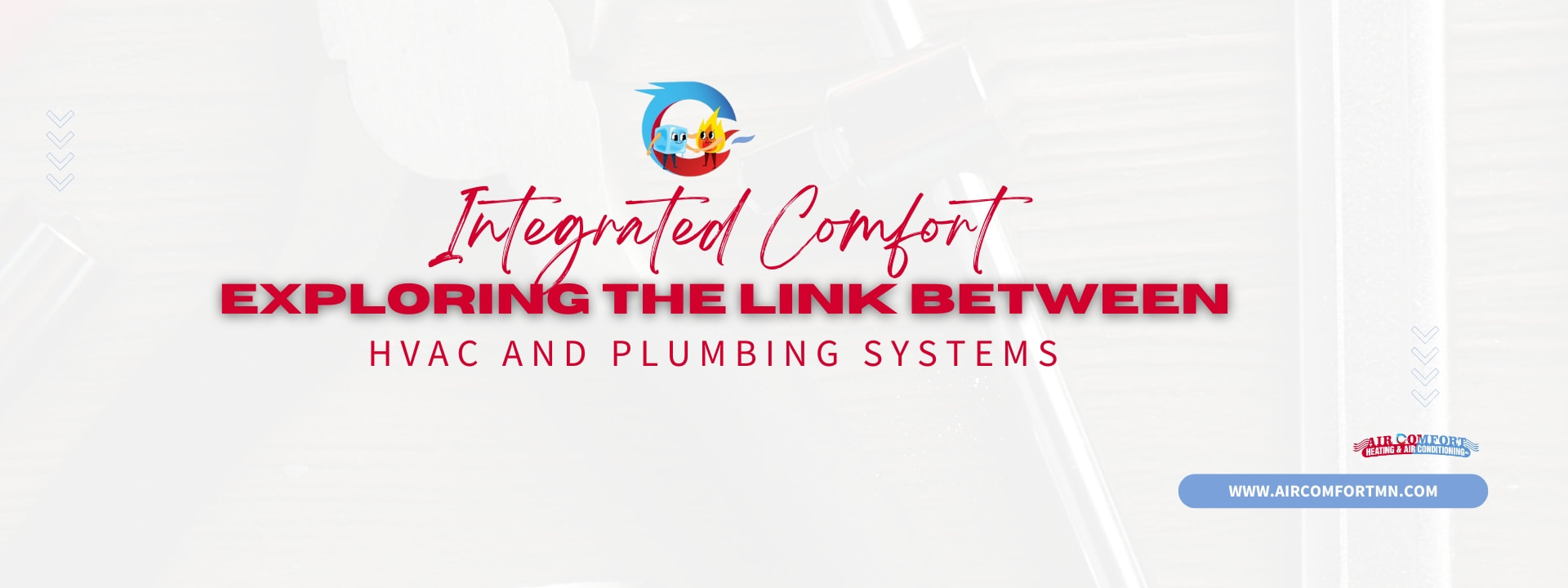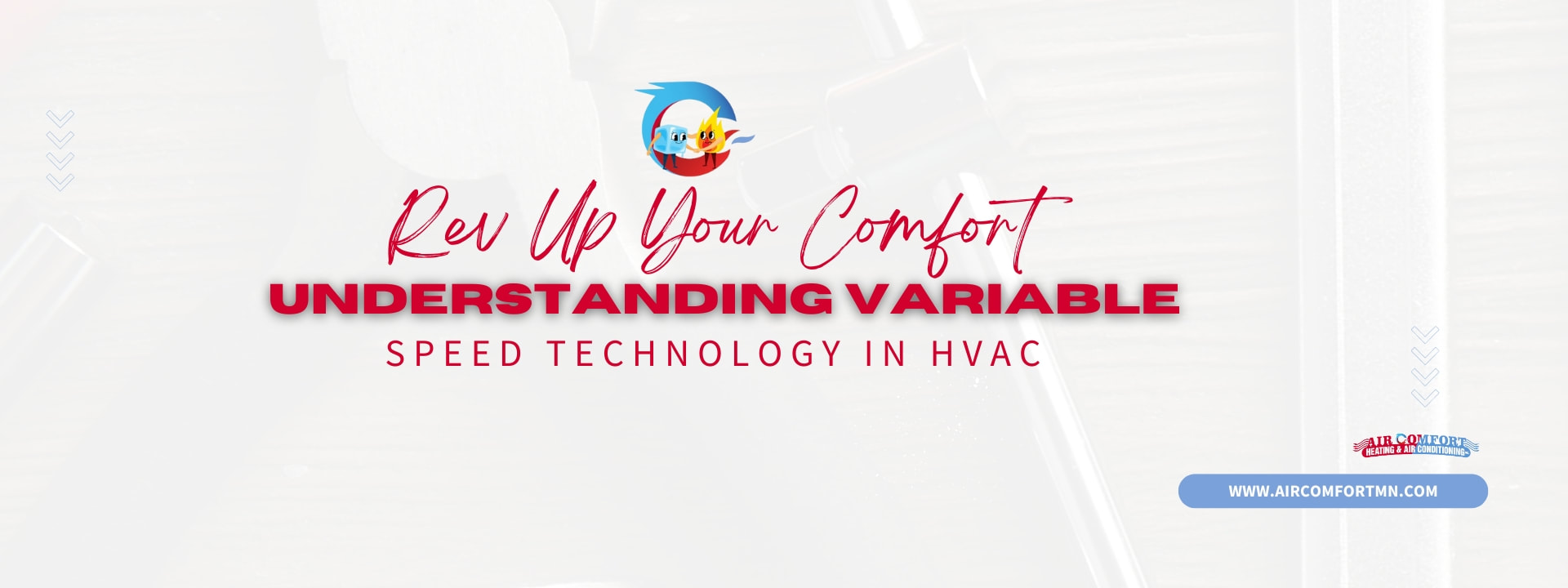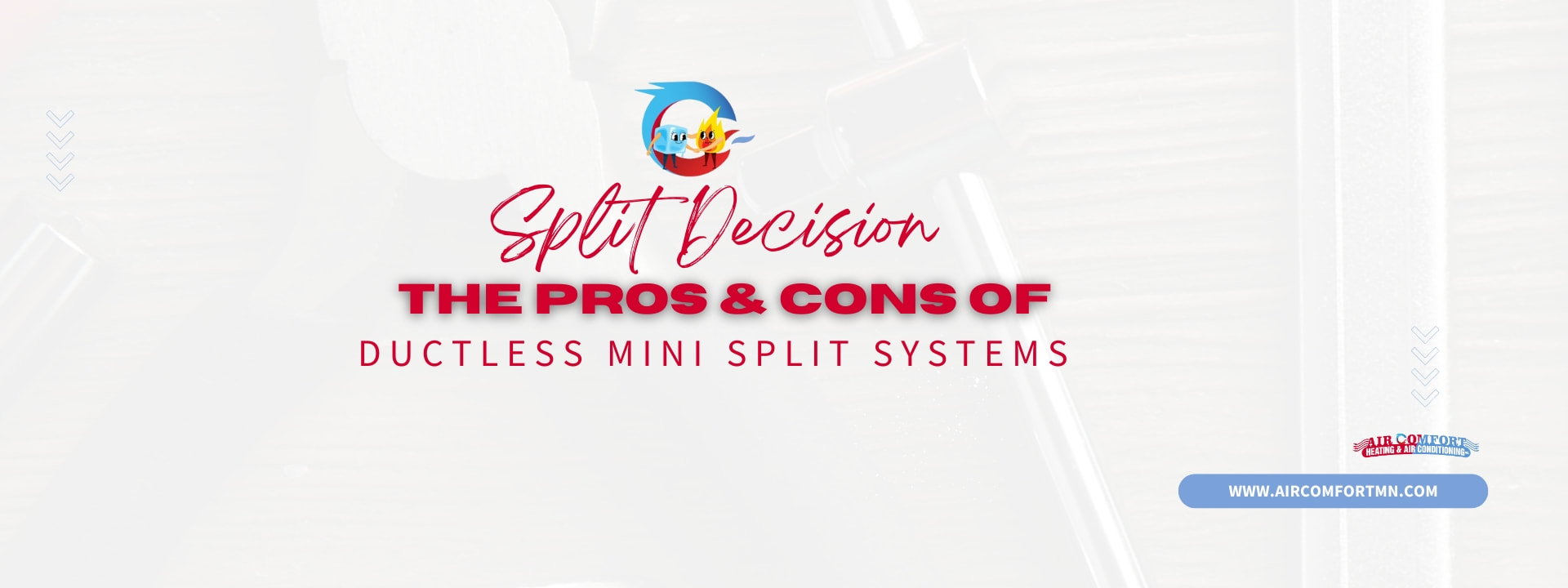|
In the quest for cleaner indoor air and more efficient HVAC operation, one technology stands out: UV lights. Ultraviolet (UV) lighting technology, particularly UV-C, is increasingly used in HVAC systems to enhance indoor air quality and system efficiency. This guide will illuminate how UV lights work within your HVAC system and explore the myriad benefits they offer.
What Are UV Lights and How Do They Work? UV lights, specifically UV-C lights, are a type of ultraviolet light known for their germicidal properties. When installed in HVAC systems, these lights emit a specific wavelength of ultraviolet light (typically around 254 nanometers) that is capable of penetrating the cell walls of microorganisms such as viruses, bacteria, and mold spores, disrupting their DNA and rendering them harmless. Key Benefits of UV Lights in HVAC Systems Improved Air Quality: The primary benefit of UV lights is their ability to significantly reduce airborne pathogens. By targeting the DNA of these microorganisms, UV-C lights prevent them from reproducing and spreading, effectively decreasing the risk of disease transmission and allergic reactions. Enhanced HVAC Efficiency: UV lights help maintain the cleanliness of the coils and drain pans in your HVAC system. By preventing the growth of mold and bacteria on these surfaces, the system can operate at optimal efficiency with improved airflow and reduced energy consumption. Reduced Home Odors: Many unpleasant odors in homes come from mold and bacteria that can develop in HVAC systems. By eliminating these microorganisms, UV lights help keep your home smelling fresh. Installation Considerations UV lights are typically installed near the coils and the air handling units of HVAC systems, where microbial growth is most likely and where air is constantly circulating. This placement ensures that the UV lights can continuously treat the air and surfaces, maximizing their effectiveness. Maintenance and Safety Maintenance of UV lights in HVAC systems is relatively straightforward but essential. It typically involves regular cleaning of the light itself and replacing the bulb according to the manufacturer's guidelines, usually every one to two years. While UV-C light is contained within the HVAC system and poses no risk to occupants in its intended use, direct exposure to UV-C light is harmful to human skin and eyes, making proper installation and maintenance critical. Cost vs. Benefits While the initial installation of UV lights in an HVAC system can be an investment, the benefits often outweigh the costs. The improvement in air quality can lead to better health outcomes for residents, potentially lowering medical bills related to respiratory issues. Additionally, the increased efficiency of the HVAC system can reduce both energy costs and the need for frequent repairs, offering significant savings over time. Integrating UV light technology into your HVAC system is a proactive step towards maintaining a healthier indoor environment and enhancing the efficiency of your heating and cooling systems. With the capacity to neutralize harmful microorganisms and improve overall air quality, UV lights are a compelling addition for those prioritizing health and efficiency in their homes. If you’re interested in learning more about UV lights for your HVAC system or if you're ready to take the next step in improving your home’s air quality, contact Air Comfort today.
0 Comments
Your home's comfort systems are more interconnected than you might think. The HVAC (heating, ventilation, and air conditioning) and plumbing systems, while serving distinct functions, often collaborate in ways that significantly impact your home's efficiency and comfort. Understanding this connection can help you maintain these systems more effectively and ensure your home operates at its best.
Understanding the Connection HVAC and plumbing systems interact mainly through water use and waste management. For instance, air conditioning units and high-efficiency furnaces produce condensate—water vapor that condenses during the heating or cooling process and needs to be drained away. This drainage is often handled through your home’s plumbing system. Moreover, certain types of HVAC systems, like geothermal heat pumps, may directly utilize water for heating and cooling processes. Benefits of a Harmonized System A well-integrated HVAC and plumbing system offers several benefits: Energy Efficiency: Properly aligned systems ensure that neither system works harder than necessary, conserving energy and reducing utility bills. Enhanced Humidity Control: Effective condensate drainage helps maintain optimal indoor humidity levels, crucial for both comfort and the health of the building structure. System Longevity: When HVAC and plumbing systems are correctly synchronized, they are less likely to experience malfunctions, leading to a longer lifespan and fewer repairs. Common Issues and Solutions Several issues can arise from the misalignment of HVAC and plumbing systems: Blocked Condensate Drain Lines: If the HVAC’s condensate line clogs or is improperly installed, it can lead to water backups and even damage to the HVAC system. Regular cleaning and proper installation are critical. Improper Sizing and Installation: HVAC systems that are not correctly sized or installed can produce excess condensate, overwhelming existing plumbing and drainage systems. Ensuring that your HVAC system is properly sized by a professional is vital. Maintenance Tips To keep your interconnected systems running smoothly: Regular Inspections: Have both your HVAC and plumbing systems inspected annually by professionals to catch any potential issues early. Clear Drain Lines: Regularly check the HVAC condensate drain line for clogs or obstructions to ensure it is draining properly. Preventative Maintenance: Schedule regular maintenance checks for both systems to prevent unexpected failures and ensure efficiency. Professional Integration and Upgrades When upgrading or replacing either system, consider how changes will affect the other. Working with skilled professionals who understand both HVAC and plumbing systems is crucial for ensuring that new installations or upgrades enhance both systems’ functionality and efficiency. This is especially important in older homes where outdated plumbing may need adjustments to support modern HVAC solutions. The synergy between your HVAC and plumbing systems plays a crucial role in maintaining the comfort and operational efficiency of your home. By recognizing how these systems are linked, you can take proactive steps to ensure they work together seamlessly, leading to a more comfortable, efficient, and problem-free home environment. If you're experiencing issues with your HVAC system, or if you're considering upgrades, don't hesitate to reach out to Air Comfort. Owning a historic home comes with a unique set of challenges, especially when it comes to modernizing the heating, ventilation, and air conditioning (HVAC) systems without compromising the architectural integrity of the building. The key is to blend modern comfort with historical preservation. This guide provides best practices for HVAC installations in historic homes, ensuring you maintain their charm while enhancing livability.
Understanding the Unique Needs of Historic Homes Historic homes are not just old; they are repositories of unique architecture and old-world techniques that may be susceptible to damage from modern installations. The materials used, the style of construction, and preservation requirements all play a crucial role in deciding the right HVAC approach. Additionally, many historic homes lack the ductwork needed for traditional central HVAC systems, which can be both a challenge and an opportunity to think creatively about solutions. Best HVAC Practices for Historic Homes 1. Use of Mini-Split Systems: Mini-split systems are often ideal for historic homes because they do not require extensive ductwork. These systems consist of an outdoor compressor and one or more indoor air handling units, connected by small hoses that only require a small hole through the walls. This setup minimizes the structural impact on the home and is easily reversible, a plus for preservation standards. 2. High-Velocity Small Duct Systems: These systems use insulated tubing that is much smaller in diameter than traditional ductwork and can be threaded through existing wall structures and cavities. This reduces the need for major renovations to install ductwork while efficiently distributing air throughout the home. 3. Radiant Heating: For homes where preserving the integrity of the floors and walls is critical, radiant heating can be a great option. Installed beneath the floors or within the walls, radiant systems provide heat directly to the surfaces of the house without the need for ducts or extensive alterations. 4. Preserving Aesthetics: It’s important to consider the visual impact of any HVAC system. Custom vent covers that match the period style, cleverly concealed units, and minimalist visible components can help maintain the aesthetic integrity of your historic home. Importance of Professional Assessment Every historic home is different, and what works for one may not be suitable for another. It is essential to engage HVAC professionals who have experience working with historic properties. They can provide a detailed assessment and suggest the best systems that comply with local historic preservation standards while meeting the heating and cooling needs of the house. Regular Maintenance for Efficiency Maintaining an HVAC system in a historic home is as crucial as installing the right one. Regular maintenance ensures that the system operates efficiently, respects the structural integrity of the house, and prevents any potential damage that could arise from a malfunctioning system. Considerations for Upgrades When upgrading, consider energy-efficient systems that reduce the environmental impact and lower operating costs. However, ensure these upgrades comply with the guidelines for historic preservation, often stipulated by local historic preservation societies. Local Regulations and Historic Preservations Before making any changes, check the local regulations regarding historic homes. Many areas have strict guidelines on what can and cannot be done in terms of visible changes and structural alterations. Balancing the historical integrity of your home with the modern comforts provided by an HVAC system doesn’t have to be a daunting task. With the right approach and expert help, you can enjoy the best of both worlds. Are you planning to upgrade your historic home’s HVAC system? Contact Air Comfort. Mold in your HVAC system is not just a minor inconvenience; it's a serious issue that can affect the air quality in your home and pose health risks to your family. Understanding how to handle mold effectively is crucial for maintaining a healthy indoor environment. Here’s a comprehensive guide on dealing with mold in your HVAC system.
Understanding Mold Growth in HVAC Mold thrives in moist, dark environments, which makes the hidden nooks and crannies of an HVAC system a perfect breeding ground. Mold growth is commonly triggered by excessive moisture, which can occur due to issues like improper drainage, leaks, or high humidity levels within the home. Once it begins to grow, mold can quickly spread through the ductwork of an HVAC system, dispersing spores throughout your home. Health Risks Associated with HVAC Mold The presence of mold can lead to various health problems, especially for individuals with allergies, asthma, or compromised immune systems. Common symptoms include coughing, sneezing, watery eyes, respiratory distress, and in severe cases, skin rashes and more serious respiratory conditions. Addressing mold growth promptly is essential to prevent these health issues. Signs of Mold in Your HVAC System Detecting mold early can help mitigate its effects. Key signs include: Musty Odors: A noticeable musty smell when the HVAC is running could indicate mold growth within the system. Visible Mold: Any visible mold on vents, ducts, or other components of the HVAC system is a clear indication of a problem. Allergic Reactions: If household members start experiencing allergy symptoms indoors without a clear cause, it could be due to mold spores circulating in the air. Preventative Measures Preventing mold growth is more effective than trying to remove it later. Key preventative steps include: Control Humidity: Keep indoor humidity levels between 30-50% using dehumidifiers or your HVAC system’s humidity control features. Ensure Proper Ventilation: Use exhaust fans in moisture-prone areas like bathrooms and kitchens to help reduce humidity levels. Regular Maintenance: Regularly replace air filters and schedule HVAC inspections to ensure there are no leaks or condensation issues. Steps to Remove Mold If you discover mold, taking immediate steps to remove it is crucial: Turn off the HVAC system to prevent further spread of mold spores. Consult a professional for serious mold issues; tackling extensive mold growth yourself can be hazardous. Clean and Disinfect: For minor mold issues, clean the affected areas with a solution of water and detergent. Do not use bleach on HVAC components. After cleaning, use an EPA-approved fungicide for HVAC systems. When to Call a Professional For extensive mold problems or if the HVAC system is difficult to access, professional cleaning services are recommended. Professionals have the tools and expertise to safely remove mold from intricate system components without causing damage. Mold in your HVAC system should never be ignored. By taking the right precautions and acting swiftly when mold is detected, you can protect your home’s air quality and your family’s health. Suspect mold in your HVAC system or need professional guidance? Contact Air Comfort today. As a parent or guardian, ensuring the safety of your home is crucial, especially when it comes to the various components of your HVAC system. Children are naturally curious and often unaware of the dangers posed by HVAC equipment. From floor vents to outdoor condenser units, each component presents a potential hazard that can be mitigated with proper childproofing measures. Here's a comprehensive guide on how to safeguard your HVAC components and protect your little ones.
Identify HVAC Hazards HVAC systems include several components that might be intriguing but dangerous to children. Key areas of concern include: Floor and wall vents: These can be easily removed by curious hands, leading to potential falls or access to small objects that can be swallowed. Outdoor units: These often have moving parts and electrical components that are hazardous when touched. Thermostats and controls: Unsupervised interaction can lead to inappropriate settings and potential system damage. Exposed wires and pipes: These can attract children and pose serious safety risks if interacted with. Tips for Childproofing Indoor Components Secure Floor Vents: Use screw-in floor vents that cannot be easily removed by children. This prevents small objects from being pushed into ducts and reduces the risk of little fingers or toys getting stuck. Protect Thermostats: Install a clear, lockable cover over thermostats to prevent children from changing settings or damaging controls. This ensures your home maintains a safe and constant temperature. Conceal Exposed Wires: Bundle and secure all accessible wires with covers that prevent tampering. Keep wires out of reach to avoid potential electrical hazards. Safety Measures for Outdoor Units Fence Around Outdoor Units: Erect a small fence or barrier around your HVAC's outdoor units to keep children from playing near potentially dangerous equipment. This also protects the unit from physical damage. Cover Exposed Pipes and Wires: Ensure all condensate pipes and electrical conduits are covered or elevated beyond a child’s reach to prevent any contact. Routine Maintenance Checks Regularly schedule professional HVAC maintenance checks to ensure all parts are securely fastened and functioning correctly. A technician can also help identify any new risks and provide solutions to mitigate them. Educational Tips For older children, it's beneficial to explain the dangers associated with playing near HVAC equipment. Educate them about the importance of respecting barriers and keeping a safe distance from outdoor units. Childproofing your HVAC components is a vital step in creating a safe home environment for your children. By taking proactive measures to secure equipment and educate your family, you can significantly reduce the risks associated with these systems. Are you unsure about how to start childproofing your HVAC system, or do you need a professional safety assessment? Contact Air Comfort today Congratulations on your new home! As a new homeowner, one of the key systems you'll need to manage is your HVAC system, which is vital for ensuring comfort and managing energy costs. Understanding and maintaining your HVAC system can prevent costly repairs and improve your home's energy efficiency. Here are some essential HVAC tips specifically tailored for new homeowners.
Know Your HVAC System First things first, identify what type of HVAC system you have. Most homes will have either a furnace and AC combo, a heat pump system that handles both heating and cooling, or boilers and radiators for heating. Knowing your system’s specifics, including the make and model, can help you understand its operation and maintenance needs. Check the manuals or ask for a run-through from a previous owner or the builder. Regular Maintenance Checks Routine maintenance is crucial to keep your HVAC system running efficiently. Start with the basics:
Thermostat Settings Understanding and optimizing your thermostat settings can significantly affect your home’s energy consumption and comfort. During winter, setting your thermostat to 68°F while you're awake and lowering it while you're asleep or away from home can save energy. In summer, the recommended setting is 78°F when you're at home. Consider investing in a programmable or smart thermostat, which can automate these settings and save you even more on energy bills. Seal and Insulate Ensure that all windows and doors are well-sealed to prevent air leaks. Check the sealing around your home's ductwork too, as leaks here can significantly reduce your system’s efficiency. Proper insulation in your attic, walls, and floors can also greatly improve your HVAC system's performance by maintaining a more consistent indoor temperature. Energy Audit Consider getting a professional energy audit to identify how you can improve your home’s energy efficiency. Auditors can spot issues that might not be obvious, such as inadequate insulation or hidden leaks that can affect your HVAC’s efficiency. Plan for Upgrades If your HVAC system is older, start planning for an upgrade. Modern systems are more energy-efficient and can significantly reduce your home energy costs. Understanding when and what to upgrade can be a major benefit in the long term. Understand the Warranty and Service Records Familiarize yourself with any warranties associated with your HVAC system. Knowing what’s covered and for how long can save you money on repairs. Keep a record of any services done on your system for future reference. By taking these steps, you can ensure that your HVAC system operates at its best, providing comfortable, clean air throughout your home while keeping energy costs down. Managing your HVAC system effectively is a crucial part of maintaining your new home. If you need more detailed guidance on your HVAC system or if it’s time for a routine check-up, contact Air Comfort today. In the quest for more efficient and comfortable home heating and cooling solutions, variable speed technology stands out as a game-changer. Unlike traditional HVAC systems that operate at a constant speed, variable speed technology allows the system to adjust its output precisely to the needs of the home. This not only boosts efficiency but also enhances overall comfort. Let’s delve into what variable speed technology is and why it might be the perfect fit for your home.
What is Variable Speed Technology? Variable speed technology refers to the ability of an HVAC system to automatically adjust the speed of its compressor and fans. Traditional systems turn on at full capacity and turn off once the thermostat setting is reached, which can lead to noticeable temperature fluctuations and higher energy use. In contrast, a variable speed unit operates at different speeds to provide more consistent heating or cooling, adapting its output to the exact needs of the space at any given time. Benefits of Variable Speed Technology Energy Efficiency: One of the most significant advantages of variable speed technology is its energy efficiency. By operating at precisely the right speed, these systems avoid the high energy use associated with the full-power start-up and shutdown cycles of traditional HVAC systems. This can lead to substantial savings on your energy bills. Consistent Comfort: Variable speed systems excel in maintaining consistent indoor temperatures. By making subtle adjustments to airflow and cooling/heating output, these systems can eliminate the hot and cold spots often experienced with conventional systems. Quiet Operation: Because they can run at lower speeds for longer periods, variable speed units are generally quieter than traditional HVAC systems. This results in a more peaceful indoor environment without the frequent noise of compressors kicking on and off. Improved Air Quality: The longer run times at lower speeds also mean more air cycles through the system's filters, improving indoor air quality. This is particularly beneficial for individuals with allergies or respiratory issues, as it can help remove more contaminants from the air. Comparing Variable Speed to Traditional Systems While traditional HVAC systems have a single-speed or limited-speed setting, variable speed systems can operate at an extensive range of outputs. This adaptability not only makes them more energy-efficient but also better at providing uniform and comfortable indoor climates without the typical temperature swings of conventional systems. Is Variable Speed Right for You? Deciding whether a variable speed system is right for your home depends on several factors, including your current HVAC system's performance, your home's size, and your climate. If you experience uneven temperatures in your home, high energy bills, or just want a more advanced system, a variable speed model could be a suitable investment. Installation and Maintenance Proper installation by a professional is crucial to maximizing the benefits of a variable speed system. It’s important to work with a knowledgeable HVAC technician who can evaluate your home’s needs and ensure your system is correctly installed. Regular maintenance is also essential to keep the system running efficiently and extend its lifespan. Variable speed technology offers a sophisticated approach to home heating and cooling, promising not just energy savings but also improved comfort and quieter operation. As technology advances, these systems are becoming a wise choice for homeowners looking to upgrade their HVAC systems. Are you interested in learning more about variable speed technology and how it can transform your home comfort? Contact Air Comfort today. As homeowners explore more efficient and customizable heating and cooling solutions, ductless mini-split systems are gaining popularity. Known for their flexibility and efficiency, these systems offer several advantages over traditional HVAC systems but come with some drawbacks as well. Whether you're renovating, building a new home, or simply upgrading your HVAC, understanding the pros and cons of ductless mini-splits is essential.
Pros of Ductless Mini-Split Systems Energy Efficiency: One of the most significant advantages of ductless mini-split systems is their energy efficiency. These systems often boast higher Seasonal Energy Efficiency Ratios (SEER) compared to traditional HVAC systems. Because they don't require ductwork, they avoid the energy losses associated with ducted systems, especially in spaces where ducts are in unconditioned spaces like attics. Flexible Installation Options: Ductless systems consist of an outdoor unit and one or more indoor units, which only require a small hole in the wall for installation. This flexibility allows them to be installed in various locations around the home and is particularly beneficial in older buildings where traditional ductwork might not be feasible. Individual Zoning: Each indoor unit can be controlled independently, allowing for personalized temperature settings in different rooms. This not only enhances personal comfort but also reduces wasted energy by not heating or cooling unoccupied spaces. Quiet Operation: Mini-splits are known for their quiet operation, making them ideal for environments where noise is a concern, such as bedrooms, offices, and libraries. Cons of Ductless Mini-Split Systems Higher Initial Cost: While ductless mini-splits save money on operational costs, their initial installation cost can be higher than traditional systems, particularly when multiple indoor units are required for a whole-home setup. Aesthetic Impact: The indoor units of mini-split systems are visible within the room they serve, which may not appeal to everyone aesthetically. While modern units are sleeker and more compact, they may still clash with certain home decors. Potential for Improper Installation: The efficiency and longevity of ductless mini-splits heavily depend on proper installation. Incorrect sizing or placement can negate many of their efficiency benefits, making professional installation crucial. Maintenance Requirements: Like all HVAC systems, mini-splits require regular maintenance to operate effectively. The filters need to be cleaned frequently, and the outdoor and indoor units require regular inspections to avoid performance degradation over time. Ideal Use Cases for Ductless Mini-Splits Ductless mini-splits are particularly useful in homes without existing ductwork, in home additions where extending ductwork is impractical, or in rooms that require specific temperature control independent from the rest of the house. They are also a great option for downsizing the energy use in large homes where only a few rooms are used regularly. Ductless mini-split systems offer a versatile and energy-efficient solution for heating and cooling needs, providing considerable advantages over traditional systems, particularly in terms of energy efficiency and customization. However, they may not be the best fit for every situation due to their higher upfront costs and aesthetic presence. Assessing your specific needs and consulting with a professional can help determine if a ductless mini-split system is right for your home. Interested in exploring ductless mini-split systems or need more personalized advice? Contact Air Comfort today In the era of smart homes, integrating your HVAC system with your home security setup is not just a convenience—it's a significant enhancement to your home's efficiency and safety. As technology advances, the connection between HVAC and home security systems becomes increasingly synergistic, providing homeowners with unprecedented control over their environment and security. Let’s explore how these two systems can work together to create a smarter and safer home.
Understanding the Connection The integration of HVAC and home security systems primarily revolves around the use of smart technology. Smart thermostats and home security platforms can communicate, allowing for shared control and data exchange. This connectivity means your HVAC system can play a direct role in home security measures and vice versa. For example, smart thermostats can automatically adjust based on security settings, or security systems can provide alerts if the HVAC system behaves unusually, indicating potential security issues or mechanical failures. Benefits of Integrating HVAC and Security Systems Energy Efficiency and Control: Integrated systems allow for more precise control over your home’s climate and energy use. For instance, your security system's cameras and sensors can detect when rooms are unoccupied and communicate with the HVAC system to adjust the temperature, saving energy without compromising comfort. Improved Security Monitoring: Your HVAC system can contribute to home security by helping to regulate the environment in response to security breaches. If smoke is detected, the HVAC system can automatically shut down to prevent spreading, while alerting homeowners and authorities through the security system. Enhanced Safety Features: Integration also enhances safety by monitoring the health of your HVAC system. Security systems can alert you if the HVAC system stops working, which could prevent dangerous situations like pipes freezing in winter or heat-related health issues during a summer outage. Smart Thermostats and Security Smart thermostats are pivotal in this integration. They act as the control hub, linking HVAC operation with security settings. Many smart thermostats can be controlled remotely via apps, which can also manage security cameras, alarms, and other smart devices. This unified approach ensures that homeowners can manage their home’s climate and security from anywhere in the world. Technological Solutions The technology enabling this integration includes Internet of Things (IoT) devices that allow seamless communication between different home systems. Platforms like Google Home and Amazon Alexa are often used to manage these devices under one ecosystem, providing an intuitive interface for controlling both HVAC and security systems. Installation and Setup Setting up an integrated system requires selecting compatible devices that can communicate with each other. Professional installation is recommended to ensure that the systems are properly synced and that all features are optimized. A professional can also provide advice on the best devices and setups for your specific needs. The integration of HVAC and home security systems represents a significant step forward in home automation. By connecting these systems, homeowners gain more control over their environment, enhance their home’s security, and improve energy efficiency. As smart home technology continues to evolve, the possibilities for integration will expand, making homes smarter, safer, and more connected. Interested in integrating your HVAC and home security systems for a smarter, safer home? Contact Air Comfort today. Experiencing hot and cold spots in your home can be frustrating, particularly when different rooms seem to have a mind of their own temperature-wise. These temperature inconsistencies not only compromise comfort but also strain your HVAC system, leading to higher energy costs. Here’s how to address and rectify these hot and cold spots to ensure your home maintains a comfortable and even temperature throughout.
Understanding Airflow Dynamics Hot and cold spots often stem from issues in airflow dynamics within the home. Factors such as blocked air vents, poor insulation, improperly sized HVAC units, or even the layout and design of your ductwork can disrupt airflow. The first step to solving these temperature imbalances is understanding that each factor can contribute differently and may require a specific approach. Practical Tips to Resolve Hot and Cold Spots Adjust Air Vents: Sometimes the solution is as simple as adjusting your air vents. Ensure that vents are not blocked by furniture or rugs and experiment with opening or slightly closing vents in different rooms to balance the airflow. Check and Seal Ductwork: Leaky or poorly insulated ductwork can significantly contribute to uneven temperatures. Inspecting your ductwork for any leaks or blockages and sealing them can help maintain consistent airflow throughout your home. Install Window Treatments: Effective use of blinds, curtains, or shades can significantly reduce heat gain during summer and heat loss during winter, helping to stabilize room temperatures. Use Fans Strategically: Ceiling fans set to rotate clockwise can push warm air that rises back down into the room during winter, while a counter-clockwise rotation helps cool rooms more effectively in the summer. Portable fans can also be used to help distribute air more evenly throughout the space. Advanced Solutions Zoning Systems: For homes with significant temperature variances between different areas, a zoning system can be an effective solution. Zoning systems allow you to control the temperature independently in different zones or rooms of your house, which can be controlled via multiple thermostats or a single programmable thermostat. Upgrade Insulation: Enhancing the insulation in your walls, attic, and floors can stabilize your home’s internal temperatures and reduce the workload on your HVAC system, resulting in more uniform heat distribution and reduced energy consumption. Consider a Professional HVAC Assessment: Sometimes, the best approach is to bring in a professional to assess your HVAC system and home layout. They can provide tailored solutions that consider the unique aspects of your home, such as its size, orientation, and existing HVAC system capacity. Long-Term Benefits of Addressing Hot and Cold Spots Addressing hot and cold spots in your home not only improves comfort but also enhances your HVAC system’s efficiency. By ensuring that your home is properly balanced in terms of temperature, you'll enjoy lower utility bills, a reduced environmental impact, and an overall more pleasant living environment. Tackling hot and cold spots might require a bit of investigation and tweaking, but the result is a more comfortable, energy-efficient home. Whether through simple DIY fixes or more comprehensive system upgrades, addressing these issues is well worth the effort. Are you ready to resolve uneven temperatures in your home? Contact Air Comfort today |
AuthorVarious. Archives
May 2024
Categories |
Privacy Policy l Cookie Policy l Conditions of Use l Notice and Take Down Policy l Website Accessibility Policy
© 2024 The content on this website is owned by us and our licensors. Do not copy any content (including images) without our consent.
© 2024 The content on this website is owned by us and our licensors. Do not copy any content (including images) without our consent.











 RSS Feed
RSS Feed